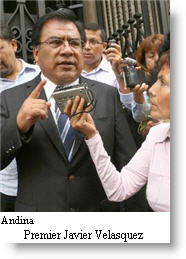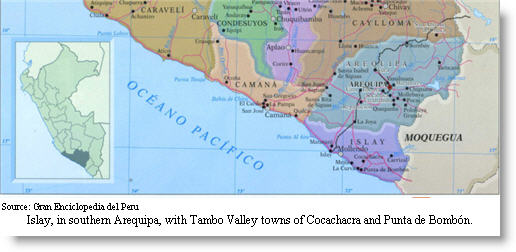The Tia Maria copper project in southern Arequipa has been put on hold for 90 days, while a government-appointed technical commission evaluates the environmental impact study and the concerns of the farming communities in the area.
The decision, one of several points agreed on after six hours of negotiations by government and regional authorities together with Southern Copper representatives, effectively ended a week-long highway blockade on the South Pan American Highway between the city of Arequipa and Islay. Both police and protesters worked together Tuesday night to clear the boulders and rocks from the highway.
 The Tia Maria project, operated by Grupo Mexico’s Southern Copper, is an open pit mine being developed in the arid mountains above the Tambo Valley in Islay province. It will require an investment of $949 million by 2016. Scheduled to start production next year, it will produce 120,000 tons of copper oxides per year in the first stage, and later to produce copper sulfates.
The Tia Maria project, operated by Grupo Mexico’s Southern Copper, is an open pit mine being developed in the arid mountains above the Tambo Valley in Islay province. It will require an investment of $949 million by 2016. Scheduled to start production next year, it will produce 120,000 tons of copper oxides per year in the first stage, and later to produce copper sulfates.
The concerns of Tambo Valley farmers is that the mine will not only contaminate the water and valley soil but also divert the amount of water available to the valley. Late last year, the Arequipa Regional Council declared an emergency in the water supply to the valley, a productive area of some 10,000 hectares that includes agroindustrial rice and sugar cane plantations as well as smaller crops of olives and hot peppers.
In September 2009, in a referendum in the surrounding districts, over 90% voted against the mining project.
The town of Cocachacra and other communities in the Islay province have made over 3,000 technical observations to the Tia Maria environmental impact study. The government’s continual postponing of any concrete solutions led to a regional defense and environmental front to lead mass protests and the blocking of the highway. President Garcia reflected his government’s defense of the mining company’s investment when he said he believed the protests came from “minuscule minorities that practice highway terrorism and want to blackmail the country by taking over a road.”
The Ministry of Interior had sent 2,000 police into the area to quell the protests but the Public Ombudsman, Beatriz Merino, succeeded in bringing all sides to the table.
“In a project that is going to take 20 years, someone ought to take the time to explain and guarantee the participatory mechanisms to the population so that it is developed in harmony,” Merino said in an interview to La Republica. Meeting with Islay authorities in Cocachacra two days before the negotiations, Merino also demanded that protesters free the highway as part of the dialogue.
The negotiations, led by premier Javier Velasquez and the ministers of agriculture, environment, energy and mines, and interior together with Islay and regional authorities, led to an agreement that includes: a technical commission with representatives from the environment ministry, Southern Copper, and Islay authorities is to evaluate the observations to the environmental impact study within 90 days; the government is to call bids this week to build the Paltiture dam in the Tambo valley to ensure the water supply to farms; and mining companies will not use water from the Tambo River.
Southern Copper, one of the world’s largest copper producers, owns the Toquepala mine in Tacna, which it operates since 1960, and the Cuajone mine in Moquegua since 1976.






